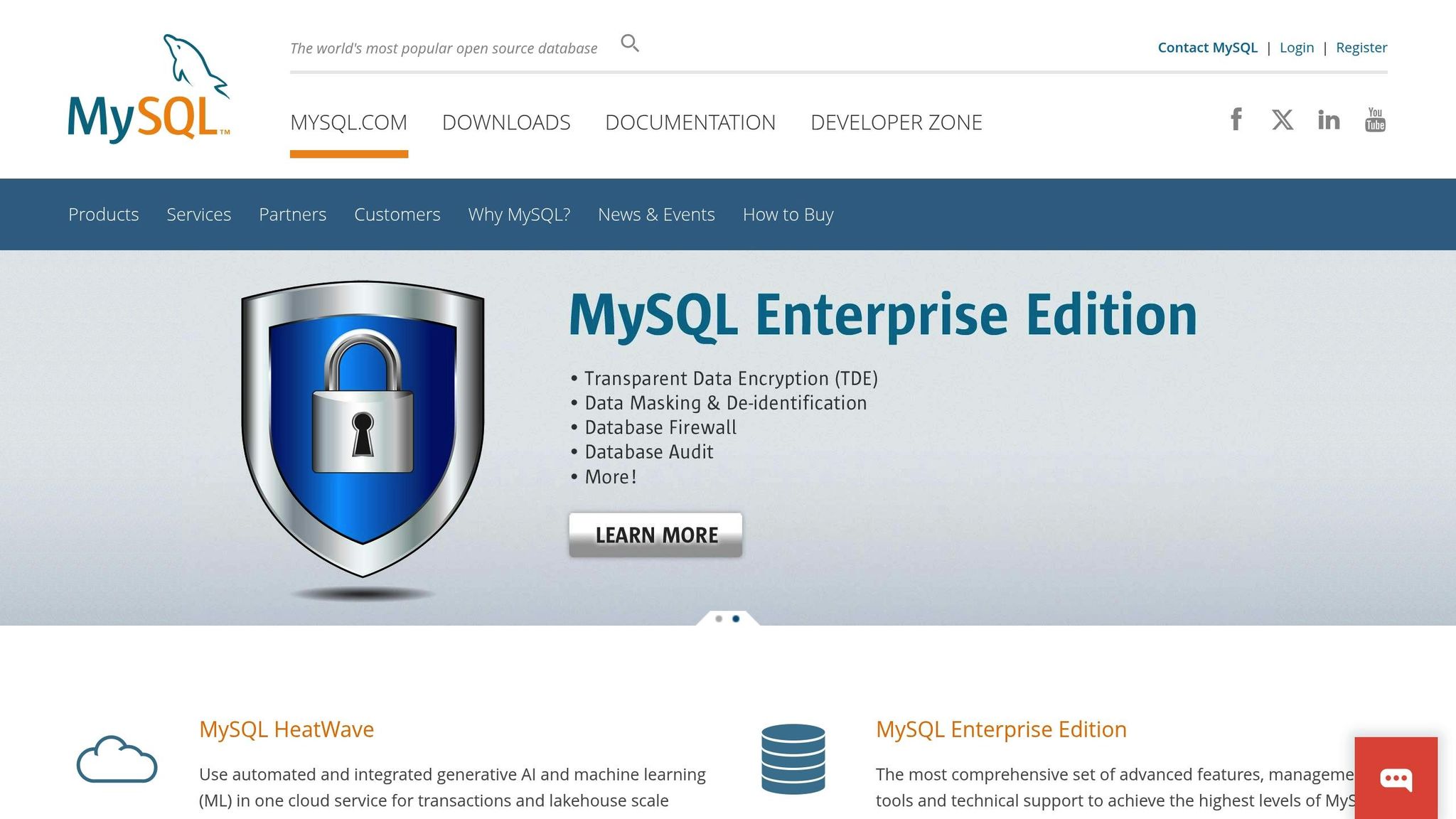Best Practices for Migrating Nonprofit Data to the Cloud
Migrating nonprofit data to the cloud enhances efficiency and security, but requires strategic planning and careful execution to avoid pitfalls.

Migrating nonprofit data to the cloud can streamline operations, improve security, and reduce costs. However, it requires careful planning to avoid common pitfalls like data loss, compliance issues, or budget overruns. Here's a quick breakdown of what you need to know:
- Why migrate? Save money, scale easily, and improve collaboration.
- Challenges: Outdated systems, scattered data, compliance complexities, limited expertise, and budget constraints.
- Key steps: Plan thoroughly, audit and clean data, back up files, and ensure compliance.
- Execution tips: Map data to the new system, standardize formats, and use tools like ETL and APIs for smooth integration.
- Post-migration: Train staff, monitor performance, and conduct regular audits to keep systems efficient and secure.
Nonprofit office hours: Migrating MySQL to the cloud | AWS Public Sector

Planning and Preparing for Migration
Thoughtful planning is the backbone of any successful cloud migration. Without a well-defined strategy, nonprofits could face challenges like data loss, prolonged downtime, or unexpected costs - issues that can disrupt their mission-driven work. This phase requires a deep dive into stakeholder needs, a thorough review of existing data, and strict adherence to compliance standards. A well-prepared plan ensures that systems, data, and teams are fully equipped for a seamless transition.
Building a Migration Strategy
The first step in crafting a migration strategy is assembling a cross-departmental team. This group should include representatives from all departments that manage data - such as finance, programs, development, and communications. Their collective input ensures that daily workflows and potential disruptions are fully understood and addressed.
Develop a timeline that aligns with your organization’s schedule and staff availability. Be mindful of risks like connectivity issues or resistance to change, and create specific plans to address them. For nonprofits that rely on year-end giving campaigns, it’s smart to schedule migration activities outside peak donation periods, typically later in the year.
Budgeting for migration involves more than just estimating cloud storage costs. Factor in additional expenses like data extraction tools, staff training, temporary overlaps between systems, and consultant fees. Setting aside extra funds for unexpected challenges can provide a safety net as you navigate the process.
Conducting a Data Audit
Before transferring any files, it’s crucial to understand the scope and location of your organization’s data. Start by mapping out all data sources, including donor management platforms like HelpYouSponsor, accounting software, email archives, shared drives, individual staff devices, and even paper records that may need digitization.
Organize your data by priority and quality. Remove duplicates and outdated files to streamline storage and improve accuracy.
Documenting how data is interconnected is equally important. For instance, knowing how donor records link to giving histories, how volunteer data ties to program participation, or how financial transactions relate to specific campaigns ensures the integrity of your data post-migration. Engaging long-term staff members who understand your organization’s history can provide valuable context during this process.
Ensuring Data Backup and Compliance
Before migrating, create and test multiple backups stored in different locations to safeguard your data.
Compliance requirements vary based on the type of data you collect and the populations you serve. For example, organizations handling healthcare data must follow HIPAA regulations, while those working with children need to adhere to additional privacy standards. Financial data also requires compliance with accounting practices and audit trail maintenance. Document the regulations relevant to your organization and confirm that your new cloud provider supports these requirements.
Protecting donor privacy is a top priority. Review and update your privacy policies to reflect cloud storage and data processing practices. Some donors may prefer their information not be stored electronically or shared with third parties, so it’s essential to manage the role of cloud providers carefully as third-party custodians.
Establish clear data retention policies before migration. Determine how long different types of records need to be kept for legal or operational reasons. For instance, financial records are often retained for seven years, while donor communications may require longer storage based on organizational policies. Setting these guidelines in advance prevents your cloud storage from becoming cluttered.
Finally, consider where your data will be physically stored. Some cloud providers distribute data across multiple countries, which could pose compliance challenges if your organization is subject to data sovereignty regulations. Confirm the geographic location of your data to ensure it aligns with applicable laws and requirements.
Data Mapping, Cleaning, and Quality Control
Once your planning is complete, it's time to focus on aligning your data to the new cloud system. Preparing your data for transfer is a critical step to ensure everything works as intended in the new platform. This process involves careful mapping, cleaning, and validation to avoid errors and inconsistencies.
Mapping Data to the New Cloud Platform
Data mapping acts as a guide, connecting your current systems to the new cloud platform. It ensures that key information - like donor names, contribution amounts, program participation records, and volunteer details - lands in the right place.
Start by documenting the field structures in both your current and target systems. For instance, your current donor database might store phone numbers in a single field, while your new platform (like HelpYouSponsor) separates them into categories like home, work, and mobile. You'll need to decide how to handle this difference. Some organizations move all phone numbers to a primary field, while others manually sort them during the cleaning process.
Address formatting often requires attention. If your legacy system uses free-form text for addresses but the new platform requires structured fields (e.g., street, city, state, ZIP code), you'll need to break the data into these components.
Don't overlook custom fields unique to your organization. These could reflect specific programs or donor segments. Document these fields and determine whether the new platform can accommodate them as-is or if adjustments are needed.
Standardizing date formats is also key. Use the MM/DD/YYYY format and convert any inconsistent entries from your legacy system to this standard.
Once mapping is complete, move on to cleaning and validating your data to ensure it's accurate and ready for migration.
Data Cleaning and Validation
After auditing your data, apply strict cleaning protocols to fix errors and inconsistencies. Clean data is essential for a smooth migration.
Start with duplicate removal. Duplicate records can cause confusion and inefficiency. For example, "John Smith", "J. Smith", and "John P. Smith" might all represent the same individual. Use matching algorithms to identify duplicates by name, address, phone, and email. However, human review is often necessary for final decisions.
Standardization is another critical step. Format phone numbers consistently (e.g., (555) 123-4567), use standard state abbreviations, and ensure consistent capitalization. You can also standardize categories like donation types, program names, and volunteer roles during this process.
If you use direct mail campaigns, address validation is crucial. Use postal service databases to verify addresses and correct issues like misspellings or incorrect ZIP codes, which can disrupt mail delivery.
Email validation helps improve communication. Remove invalid email addresses, fix common typos (e.g., "gmial.com" instead of "gmail.com"), and identify inactive accounts. This cleanup can boost email deliverability and reduce bounce rates.
Pay special attention to financial data. Verify donation amounts, dates, and payment methods for accuracy. Look for unusual patterns, such as missing decimal points or dates outside expected ranges, as these could signal errors.
Setting Up Data Retention Policies
Data retention policies determine how long you keep information, when to archive it, and when to delete it. These policies must balance operational needs, legal requirements, and storage costs while respecting donor privacy.
- Financial records often require the longest retention. Most nonprofits keep donation records, grant documentation, and financial statements for at least seven years to meet IRS requirements. Some organizations retain them longer for historical analysis or major gift research.
- Communication records have shorter retention needs. Donor emails might be kept for three to five years, while marketing campaign data could be archived after two years. Consider the value of this data for relationship building when setting these timeframes.
- Program participation data may need extended retention for grant reporting, impact measurement, or longitudinal studies. Some funders require grantees to keep program records for specific periods after a grant ends.
- Personal information requires careful handling. Some jurisdictions allow individuals to request the deletion of their data, while others have strict rules about how long certain information can be stored. Document these requirements and ensure your cloud platform supports necessary deletion processes.
Set up automated archiving processes to move older data to lower-cost storage tiers while keeping it accessible for compliance purposes. Many cloud platforms offer tiered storage, where frequently used data stays readily available, and older records move to less expensive archival storage.
Regularly review and update your retention policies to adapt to organizational growth and changing regulations. Annual reviews ensure your policies remain effective and compliant.
Finally, ensure your team understands and consistently applies these policies. Clear documentation and training can help staff know what to delete, what to preserve, and how to handle special data requests.
Integrating Cloud Systems with Nonprofit Tools
Once your data is clean and properly mapped, the next step is integrating your cloud system with the tools your nonprofit already relies on. This is where the magic happens - ensuring your operations remain seamless while unlocking new efficiencies. The goal here is to align your cloud setup with your organization's mission and day-to-day workflows, so you’re not reinventing the wheel but enhancing how it turns.
Customizing Integrations for Specific Workflows
Your nonprofit’s processes are as unique as its mission. That’s why it’s crucial to integrate your cloud system in a way that complements your existing workflows rather than upending them.
For example, donor records, sponsorship updates, and financial reports should sync effortlessly across your communication, payment, and reporting tools. Here’s how tailored integrations can make a difference:
- Financial reporting: Simplify year-end giving campaigns by connecting your cloud platform to accounting software. This ensures donation data flows directly into financial reports, reducing manual entry and minimizing errors that could complicate tax filings or grant applications.
- Program-specific needs: If your organization runs multiple initiatives, your system should support distinct data flows for each. Platforms like HelpYouSponsor can handle everything from individual sponsorships to large-scale campaigns while keeping tracking and reporting separate for each program.
- Event management: Fundraising events demand smooth coordination. Your cloud system should integrate with registration platforms, payment processors, and volunteer management tools. For instance, when someone registers for your annual gala, their information should automatically update their donor profile and trigger follow-up actions.
By using tools like ETL systems and APIs, you can ensure your data moves smoothly between platforms, keeping everything in sync.
Using ETL Tools and APIs for Migration
ETL (Extract, Transform, Load) tools and APIs are the unsung heroes of cloud integration. They handle the heavy lifting of moving data between systems while maintaining accuracy and consistency.
- ETL tools: These extract data from your old system, transform it to meet the requirements of your new platform, and load it into the correct locations. This process ensures a smooth transition without disrupting your operations.
- API connections: APIs act as bridges, enabling real-time communication between systems. Many nonprofit platforms have APIs that connect with tools like QuickBooks, Mailchimp, and Salesforce. Check your platform’s API documentation for setup instructions.
- Automated data synchronization: Avoid juggling multiple databases by setting up regular sync schedules. For instance, donor records, contributions, and program data can update overnight, ensuring your systems are always current without interrupting daily tasks.
- Error handling and logging: These features help catch issues like failed data transfers or duplicate entries before they escalate. Set up alerts to address problems quickly and maintain smooth operations.
- Batch processing: Large data transfers can be handled efficiently with batch processing, allowing thousands of records to be moved at once without compromising system performance.
Once your data is flowing seamlessly, it’s time to focus on who gets access to what.
Managing User Access and Permissions
Data security and accessibility go hand in hand. Cloud platforms offer robust tools to ensure each team member has access to the information they need - nothing more, nothing less.
- Role-based access: Permissions can be tailored to job responsibilities. For example, development staff may need full access to donor records, while volunteer coordinators might only need contact and participation details. Program managers can focus solely on their initiatives without viewing sensitive data from other departments.
- Temporary permissions: During busy periods, like major fundraisers, you may need to grant temporary access to additional volunteers. A good platform makes it easy to add and remove users without a headache.
- Audit trails: These logs track who accessed what data and when, which is invaluable for compliance and identifying potential security issues. Many funders require nonprofits to demonstrate proper data handling, and audit trails provide the documentation you need.
- Multi-factor authentication: Adding an extra layer of security doesn’t have to be a hassle. Most platforms support authentication methods like text codes or app-based verification to ensure only authorized users gain access.
- Data export restrictions: To prevent unauthorized sharing, configure permissions so only specific roles can download sensitive information like donor lists or financial reports. This helps maintain compliance with privacy regulations and donor trust.
- Regular permission reviews: Staff roles evolve, and your permissions should keep up. Schedule quarterly reviews to remove access for former employees, adjust permissions for those in new roles, and onboard new team members. This proactive approach ensures smooth operations and keeps your data secure.
Post-Migration Support and System Improvement
Migrating to the cloud is just the beginning. Once your data transfer is complete, the real work starts - ongoing support, regular feedback, and timely updates are essential to ensure the new system keeps up with your organization's changing needs.
Training and Onboarding Staff
The success of your migration hinges on how well your team adapts to the new system. A well-structured training program is key to ensuring staff can hit the ground running and make the most of your cloud platform.
Tailor training sessions to specific roles instead of opting for generic workshops. For example, your development team might need an in-depth understanding of donor management tools, while program coordinators should focus on participant tracking and reporting features. Meanwhile, the finance team will benefit from training on budget reporting and expense tracking. This targeted approach avoids overwhelming staff with irrelevant information and helps them immediately apply what they learn.
Hands-on practice sessions are far more effective than theoretical demonstrations. Create a training environment with sample data that mimics real-world scenarios. For instance, let the development team practice processing a major donation, updating donor preferences, and generating thank-you letters. Similarly, program staff can rehearse enrolling participants, tracking milestones, and generating reports. These exercises not only build confidence but also highlight potential workflow issues before they impact daily operations.
To reinforce learning, provide concise guides and short video tutorials for common tasks. Employees often forget details from training sessions once they return to their busy schedules. Quick, task-focused resources - complete with screenshots of your actual system setup - make it easier for staff to find answers without disrupting their workflow.
Consider appointing "champion users" to help speed up adoption across the organization. These are enthusiastic early adopters who receive advanced training and act as go-to resources for their colleagues. Champion users reduce the load on your IT team and foster peer-to-peer learning. Plus, they can offer valuable insights into user experience challenges that might not surface during formal training.
Once your team is trained and ready, shift your focus to monitoring system performance and refining workflows.
Monitoring and Making Improvements
Regular system monitoring is essential for identifying bottlenecks, inefficiencies, and opportunities for improvement. Cloud platforms often provide a wealth of data on how the system is being used, which features are most valuable, and where adjustments may be needed.
Track key performance metrics such as data entry times, report generation speeds, and user activity. These insights can help pinpoint workflow inefficiencies and determine if additional training or system tweaks are necessary.
Gather feedback from all levels of your organization. Schedule monthly check-ins with department heads to discuss successes and challenges. Use simple feedback forms to allow staff to report bugs, suggest improvements, or request new features. Sometimes, small adjustments - like reconfiguring a frequently used feature - can make a big difference in productivity and user satisfaction.
Don’t overlook the importance of data quality. Automated alerts for duplicate records, missing fields, or unusual patterns can help you catch and resolve issues before they escalate. Maintaining clean, accurate data builds trust among users and ensures the system runs efficiently.
As your organization evolves, so will your system needs. For example, an annual fundraising campaign might reveal that certain reports take too long to generate, or frequent feedback might highlight that a popular feature is hard to access. Use these insights to guide system updates that enhance daily operations.
These ongoing improvements tie directly into regular system audits, ensuring your platform continues to meet your organizational goals.
Conducting Regular System Audits
Quarterly system audits are a proactive way to ensure your cloud platform remains secure, compliant, and efficient. These audits help catch potential issues before they disrupt operations.
Security audits focus on safeguarding sensitive data. Review user access permissions to ensure they align with current roles, deactivate accounts for former employees, and verify that backup systems are functioning as intended. If any gaps are identified, document them and create action plans to address vulnerabilities promptly.
Compliance reviews are essential for maintaining trust with funders, regulators, and donors. Check that your data retention policies align with legal and organizational requirements. Ensure donor privacy preferences are respected, and verify that financial data is handled according to accounting standards. Many grants require specific reporting capabilities, so confirm your system can produce the necessary reports in the correct formats.
Operational efficiency assessments help streamline workflows and reduce manual tasks. Identify processes that still require significant manual effort and explore automation options. Evaluate how well your cloud platform integrates with tools like accounting software, email systems, or payment processors. Eliminating redundant tasks can save time and improve accuracy.
Goal alignment reviews ensure your system keeps pace with your organization’s mission. As your programs grow or shift focus, your data management needs will change too. Regular audits help identify when new integrations, additional training, or system modifications are necessary to better support your objectives.
Document your audit findings and create actionable plans with clear timelines and assigned responsibilities. Share relevant results with board members and stakeholders to demonstrate your commitment to effective data management and operational excellence.
Conclusion
Moving nonprofit data to the cloud takes more than just transferring files - it requires a thoughtful strategy and a long-term commitment to improving systems and empowering staff.
Careful planning and conducting data audits are key to avoiding setbacks and ensuring the migration aligns with both short-term needs and future goals.
Maintaining data quality and ensuring seamless integration are essential throughout the process. Clean, well-organized data minimizes post-migration headaches and encourages users to embrace the new system. Using automated tools to validate data can help catch errors, duplicates, and inconsistencies, keeping your data in top shape.
Training plays a big role in helping staff adapt quickly. Focused training programs not only speed up the learning curve but also encourage teamwork and smarter, data-driven decisions.
Post-migration support is what transforms a successful migration into an optimized system. Regular system reviews, ongoing monitoring, and keeping detailed audit trails of data activities allow nonprofits to catch and fix issues before they disrupt operations. These efforts help ensure the migration becomes a living, evolving part of the organization’s success.
With solid planning, strict attention to data quality, and a commitment to staff development, cloud migration becomes more than just a technical upgrade. It turns into a path toward greater efficiency, security, and scalability - helping nonprofits better achieve their mission and make a lasting impact in their communities.
FAQs
What are the main compliance challenges nonprofits face when moving data to the cloud, and how can they overcome them?
Nonprofits frequently encounter hurdles like data security risks, regulatory requirements, and data sovereignty concerns when moving to cloud-based systems. Addressing these challenges starts with adopting robust encryption methods, performing regular compliance audits, and choosing cloud providers that hold respected security and compliance certifications.
To minimize risks even further, nonprofits should invest in staff training on compliance standards and establish clear data governance policies. These measures not only support a safer transition to the cloud but also help ensure adherence to relevant regulations throughout the process.
What steps can nonprofits take to ensure accurate data during the mapping and cleaning process?
To keep your data accurate and reliable during mapping and cleaning, nonprofits can take a few key actions. Begin by standardizing data entry practices to maintain consistency across all records. Designate data owners who will oversee and manage specific datasets, ensuring accountability. Regularly remove duplicate records to avoid redundancies and clutter. Before importing any data, double-check the accuracy of your sources, and implement routine validation checks to identify and fix errors early. Lastly, set up a schedule for periodic updates to ensure your information stays current and useful. These steps can make your migration process smoother and protect the quality of your data.
How can nonprofits train their staff and ensure a seamless transition to a new cloud system?
To make shifting to a new cloud system as smooth as possible, nonprofits can begin with small pilot projects. These allow staff to get comfortable with the platform in a low-stress setting, helping ease the learning curve. It's also important to clearly explain the advantages of the new system to build trust and generate excitement among team members.
Offering customized training programs tailored to the unique responsibilities of each role can significantly boost understanding and acceptance. Additionally, assembling a dedicated migration team to oversee the process and provide ongoing support ensures that any issues are addressed promptly, keeping everything on track. By focusing on these steps, nonprofits can support their teams effectively and reduce potential disruptions during the transition.

